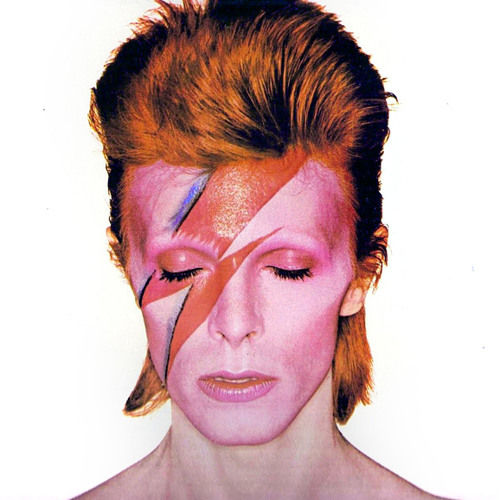Success Stories I: David Bowie's Ziggy Stardust
- Rashmi Sunder
- May 17, 2021
- 2 min read
Updated: May 18
Ziggy played guitar
Jamming good with Weird and Gilly
And the Spiders from Mars
...
Ziggy really sang
Screwed-up eyes and screwed-down hairdo
Like some cat from Japan
...
Making love with his ego
Ziggy sucked up into his mind

These lyrics from the eponymous track, 'Ziggy Stardust' embodies everything that Bowie's iconic stage persona was all about. Created for his 5th studio album, 'The Rise and Fall of Ziggy Stardust and the Spiders from Mars' (1972), the character follows the story of an androgynous rock star who travels to Earth to warn them about the impending apocalypse.
Instead of returning, the cult following he accrues on the planet feeds his insatiable ego, ultimately leading to his demise.
This stage persona catapulted Bowie into a global icon that reshaped the culture of rock. The success of his carefully curated character can be attributed to pivotal elements of the 'Ziggy' alter-ego -
He subverted the genre by redefining what it meant to be a rock star. His persona was bold and unapologetic - donning a vibrant red mullet, pale, Japanese Kabuki-inspired makeup, and shaved eyebrows.
The gender-bending Ziggy embraced his sexuality in all its bisexual, androgynous glory - something that was still not openly talked about or acceptable, especially in rock music circles.
Ziggy may have been alien, but his fashion statement reinvented human notions of what being a rockstar looked like. With splashes of glitter, flamboyant costumes, the recognisable lightning bolt (originally, a gold astral sphere) across the face - rock was now glamourous.
There was cohesion in his narrative - from the sonic/lyrical choices, the stage performances, the public appearances, to the inspiration for the character - everything encapsulates the art of curation.
His character was more than just a chance to dress up and reinvent himself - it was a social commentary on what fame and success can do to a celebrity. The relatability of his character and his lyrics made the persona that much more real. As Atton suggests, "self-curation can be employed by musicians...as an intervention in dominant critical accounts of the musicians' creative practices" (2014, p. 413).
Although he retired the alter-ego 2 years later, Bowie himself acknowledged the success of Ziggy and the role that self-curation played in it.
“What I did with my Ziggy Stardust was package a totally credible, plastic rock ‘n’ roll singer...“I mean, my plastic rock & roller was much more plastic than anybodys. And that was what was needed at the time.”
While the legendary rockstar met his untimely demise in 2016, the character of Ziggy Stardust lives on - in the hearts of his fans and in the binaries of the digital era.
Word Count: 444
References:
Atton, C. (2014). 'Curating popular music: Authority and history, aesthetics, and technology', in Popular Music, Vol.33(3), p. 413-427
Bertram, C. (2020). Biography. Available at: https://www.biography.com/news/david-bowie-ziggy-stardust (Accessed on 18th May, 2021)





















Comments